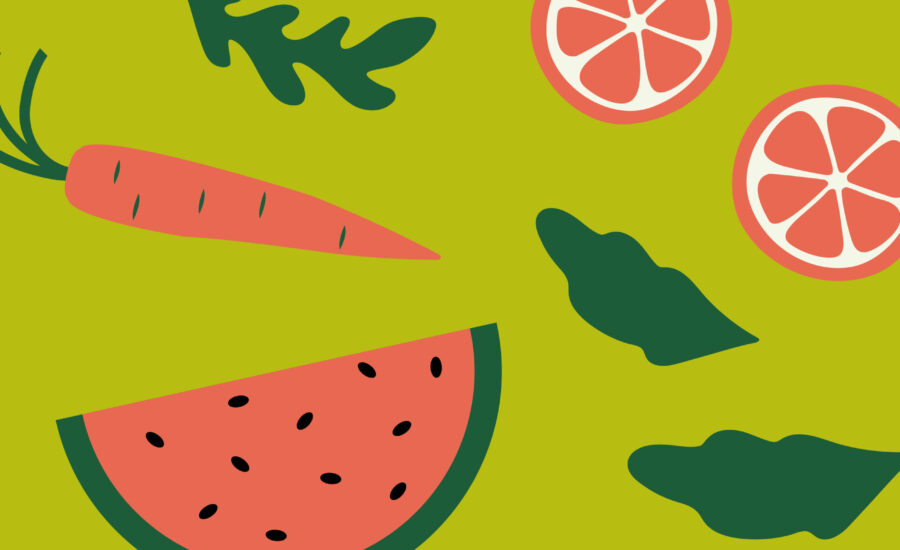4 Powerful Plant Pigments for Your Heart

The following article was written by Heinen’s Chief Dietitian, Melanie Jatsek RD, LD.
Plant pigments are special compounds responsible for giving plants their color. In addition to their visual appeal, Mother Nature assigned varying roles to the different pigments, each supporting key areas of our health.
We’ve made it easy for you to benefit from their goodness by dedicating Fx Pillars 1 and 2 to greens and rainbow fruits and vegetables
- Pillar 1: Eat your greens, as many as you can every day.
- Pillar 2: Eat the rainbow, at least one fruit and two vegetables every day.
The major classes of plant pigments are chlorophylls, carotenoids, betalains and anthocyanins. Let’s learn about the treasure of health benefits buried within each color.
Chlorophylls: Eat Your Greens
Chlorophyll is the primary pigment in greens. With its antioxidant, anti-inflammatory and detoxifying properties, it has the power to fight the diseases common in our society and can also reduce difficulties typically associated with aging.
Remember this, pound-for-pound and calorie-for-calorie, greens are the most nutritive foods in existence. To enjoy the benefits of leafy greens, reach for deeply colored varieties like Swiss chard, spinach, collard greens and kale.
Carotenoids: Reds, Oranges & Yellows
The red color in tomatoes, watermelons, beets and pink grapefruit comes from a carotenoid called lycopene. It helps to reduce the risk of heart disease and several types of cancer, especially those of the lung and prostate.
Beta carotene is the carotenoid that gives sweet potatoes, pumpkins and carrots their rich orange color. The human body converts beta carotene into vitamin A (retinol)—an important component for a strong immune system and healthy skin, eyes and mucus membranes.
Betalains: Reds & Yellows
Betalains serve as antioxidants to the plant and appear as red or yellow. They are most often noticeable in the petals of flowers, but may also color the fruits, leaves, stems and roots of the plants that contain them. Betalains replace anthocyanins in certain flowering plants.
Anthocyanins: Purples, Blues & Reds
Anthocyanins are plentiful in blueberries, blackberries, strawberries, raspberries, red grapes and red cabbage. They act as powerful antioxidants to protect our cells from damage and promote a strong heart and healthful aging. In addition, they can help reduce the risk of cancer, stroke and heart disease.
Blueberries are superstars! Although sweet to the taste buds, they are actually anti-glycating, or, in other words, anti-diabetic! A handful of blueberries each day can work wonders, so enjoy them on their own or in a smoothie, quinoa bowl or wild rice blend.
Key Takeaway
When choosing food, aim for a variety of colors. Along with greens, reach for yellows, oranges, reds, purples and even the whites of cauliflower, garlic and onions. Dare to be bold and try something new! How about pomegranates? The seeds add a beautiful pop of color to leafy green salads. In addition to onion, slice up a leek and add to stir-fries or soups, like Chicken Soup or Roasted Cauliflower and Leek Soup. The sky is the limit!


